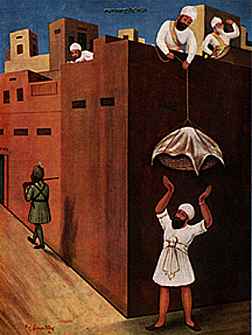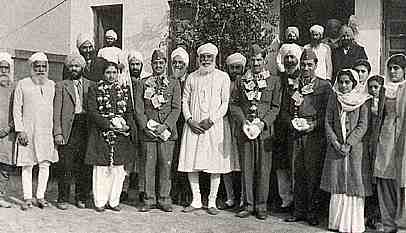| | | The
Namdharies on the other hand, were not made of the ordinary stuff. They had steel
in their souls. They were pledged to do and die. They invented and perfected their
own system of sending and receiving mes-sages, letters, and orders, from and to
their Central Head-quarters. They surveyed their own routes of communica-tion
from one place to another. They made contacts in far-flung places. By the year
1871, the Namdharies had put up their activity centres at Gwalior, Benaras, Lucknow,
Hyderabad, Haripur Hazara, Peshawar, Kabul, Nepal, Bhutan and Kashmir. They had
also contacted and formed friendships with the Maharaja of Nepal, the Maharaja
of Kashmir, and the Dev Raja of Bhutan. In Nepal, the Namdhari representatives
met Nand Ram, the Punjabi Rajput, who had played a conspicuous part during the
mutiny of 1857, and was thus given the name of General by his comrades. In the
year 1871, the British Government sent its secret agent, Raja Shivraj Singh, of
Kashipur to Nepal to find out the whereabouts of the Indian rebels residing in
Nepal. On his return to India, Raja Sahib reported1 that he had met and talked
to Kirpar SingI and had also met the younger brother of Tantiya Topee, but he
could not find any trace about Nana Sahib and Kishan Singh Kuka. By 1872, a well-knit
organisation with secret cells and activity Centres was working in full swing,
in Peshawar, Kabul, Haripur Hazara, and the Russian Turkistan, through Suba Gurcharan
Singh |
| | | |
Sri Satguru Partap Singh Ji with the leaders of
the "Azaad Hind Fauj" General Shah Nawaz, Captain Sehgal and Captain
Dhillon-after their acquittal by the Army Court Sri
Satguru Ji along with S. Sardool Singh Kaveeshar, Maulana Sahib and other dignitaries
garlanded the heroes of "Azad Hind Army". Satguru Ji embraced the three
stalwarts and warmly patted them. | | | | |
| | | | | The
Kukas are an orthodox sect of the Sikhs. The principles of their teachings are
monotheistic and moral. The tenets of their religion prohibit idol worship, and
observance of the distinction of caste. They permit the marriage of widows, prohibit
the receiving of money, in lieu of a daughter or a sister, and enjoin morality
and abstinence from the use of spirits and other intoxicating liquors. .Mohammedans
were permitted to become the members of the new sectů Suspicions having been aroused,
that the object of Ram Singh and his disciples were not merely religious, but
that, under the guise of a religious reformer and a teacher of moral precepts,
he harboured deep political designs, the Guru was, for some years, detained under
strict surveillance in his village. (History of the Punjab by Mohammed Latif -
page 594-595, published in 1891) | | | | | | |


